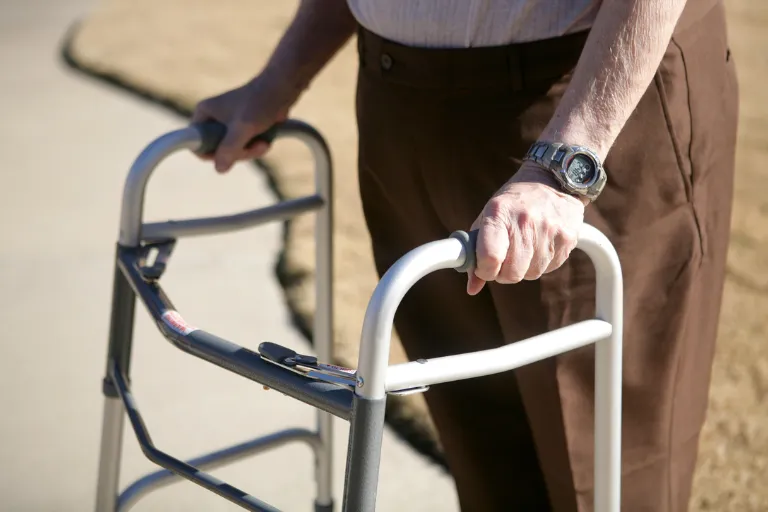Selecting the right walker for seniors with joint pain can greatly enhance mobility and independence. It’s important to choose a walker that offers both comfort and support. Here, we explore the key factors to consider and provide steps for making the best choice.
Stability and Balance
Explanation: A stable walker can prevent falls and provide confidence while walking. Look for walkers with a wide base and sturdy frame.
💡 Tip: Test the walker to ensure it feels stable. Consider models with four wheels for maximum balance.
Benefit: Increased stability reduces the risk of falls and promotes safer mobility.
Adjustable Height
Explanation: Walkers with adjustable height settings allow for a customized fit, ensuring proper posture and comfort.
💡 Tip: Choose a walker that can be easily adjusted to match the user’s height. This helps in maintaining an ergonomic position while walking.
Benefit: Proper height adjustment prevents strain on the back and joints, making walking more comfortable.
Lightweight Design
Explanation: A lightweight walker is easier to maneuver, especially for seniors with joint pain who may have limited strength.
💡 Tip: Look for walkers made from lightweight materials like aluminum. Ensure it’s easy to lift and move.
Benefit: A lighter walker reduces effort and makes daily activities less tiring.
Comfortable Handgrips
Explanation: Joint pain can make gripping difficult. Soft, ergonomic handgrips can ease discomfort and provide a secure hold.
💡 Tip: Choose a walker with padded or molded handgrips. Test the grips to ensure they are comfortable to hold for extended periods.
Benefit: Comfortable handgrips reduce pain and fatigue in the hands and wrists.
Foldability and Storage
Explanation: A walker that folds easily is convenient for storage and travel. It allows seniors to maintain mobility outside the home.
💡 Tip: Test the folding mechanism to ensure it is simple and quick. Consider where the walker will be stored when not in use.
Benefit: Easy storage and portability enhance independence and flexibility.
Additional Features
Explanation: Walkers can come with various features like seats, baskets, and trays. These add-ons can enhance usability and convenience.
💡 Tip: Identify the features that would be most beneficial, such as a built-in seat for resting or a basket for carrying personal items.
Benefit: Additional features make the walker more functional and improve the quality of life.
Durability and Quality
Explanation: Investing in a high-quality walker ensures long-term use and reliability. Durable materials and construction are key.
💡 Tip: Read reviews and choose a walker from a reputable brand. Look for warranties or guarantees.
Benefit: A durable walker provides lasting support and peace of mind.
Ease of Use
Explanation: A walker should be simple to use, with intuitive controls and adjustments. This is especially important for seniors with joint pain.
💡 Tip: Test the walker to ensure it is easy to operate. Features like brake handles should be within easy reach and require minimal effort.
Benefit: Ease of use encourages regular use and enhances mobility.
Subscribe for Free for more insightful health articles tailored to your needs.
Safety Features
Explanation: Safety is paramount when choosing a walker. Features like locking brakes and non-slip tips can prevent accidents.
💡 Tip: Ensure the walker has reliable brakes and check that the tips or wheels provide good traction.
Benefit: Enhanced safety features reduce the risk of accidents and provide peace of mind.
Professional Advice
Explanation: Consulting a healthcare professional can provide personalised recommendations based on specific needs and conditions.
💡 Tip: Schedule an appointment to discuss options and get fitted for the right walker.
Benefit: Professional advice ensures you select the most suitable walker for your needs.
Conclusion
Choosing the right walker for seniors with joint pain involves considering factors like stability, comfort, and additional features. By focusing on these aspects, you can find a walker that enhances mobility and independence. Remember to consult with a healthcare provider for personalised advice and to ensure the best fit.
This blog post aims to be informational and should not replace professional medical advice. Always consult with a healthcare provider for personalised advice.
Subscribe for Free for more health tips and expert advice straight to your inbox.



